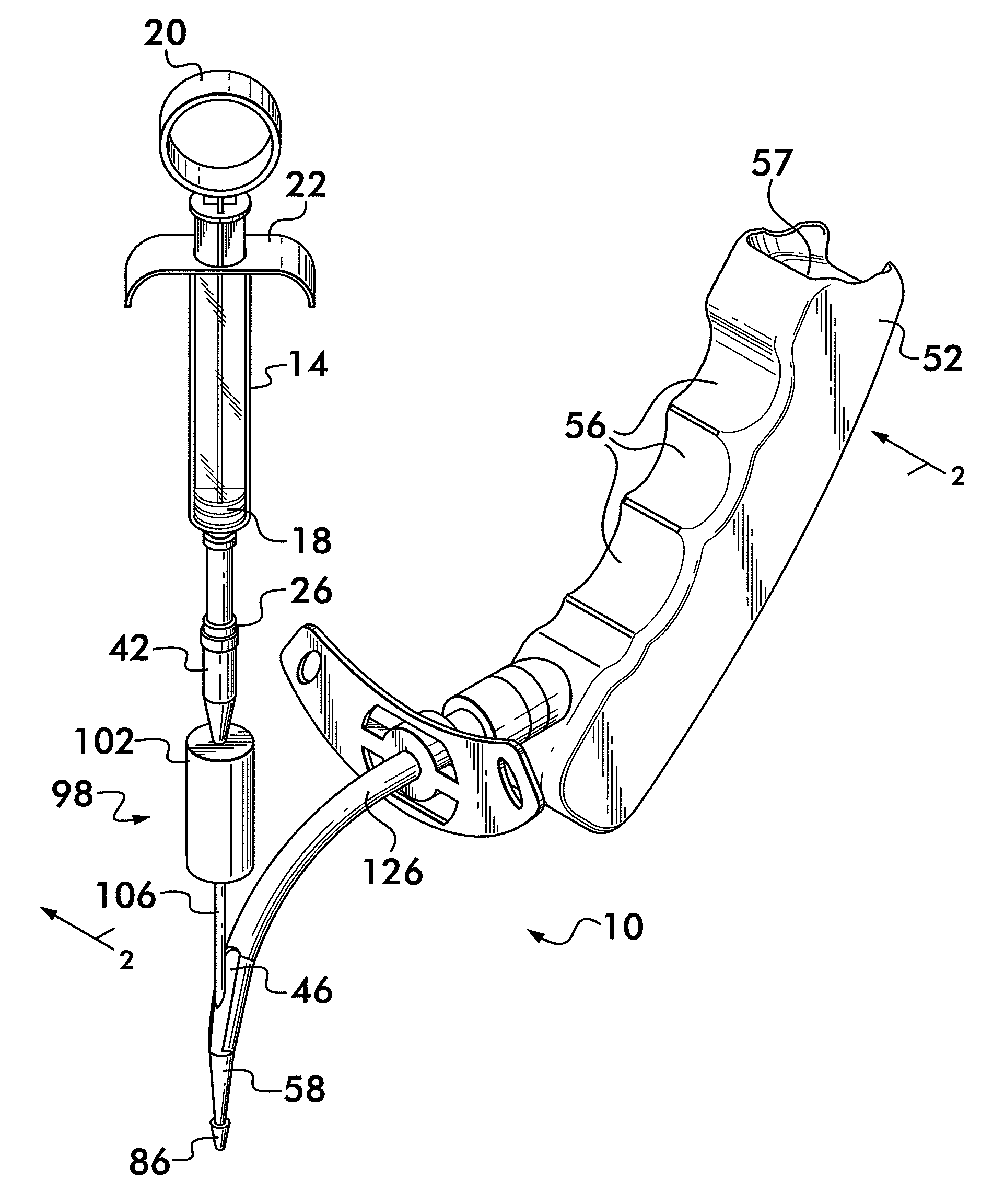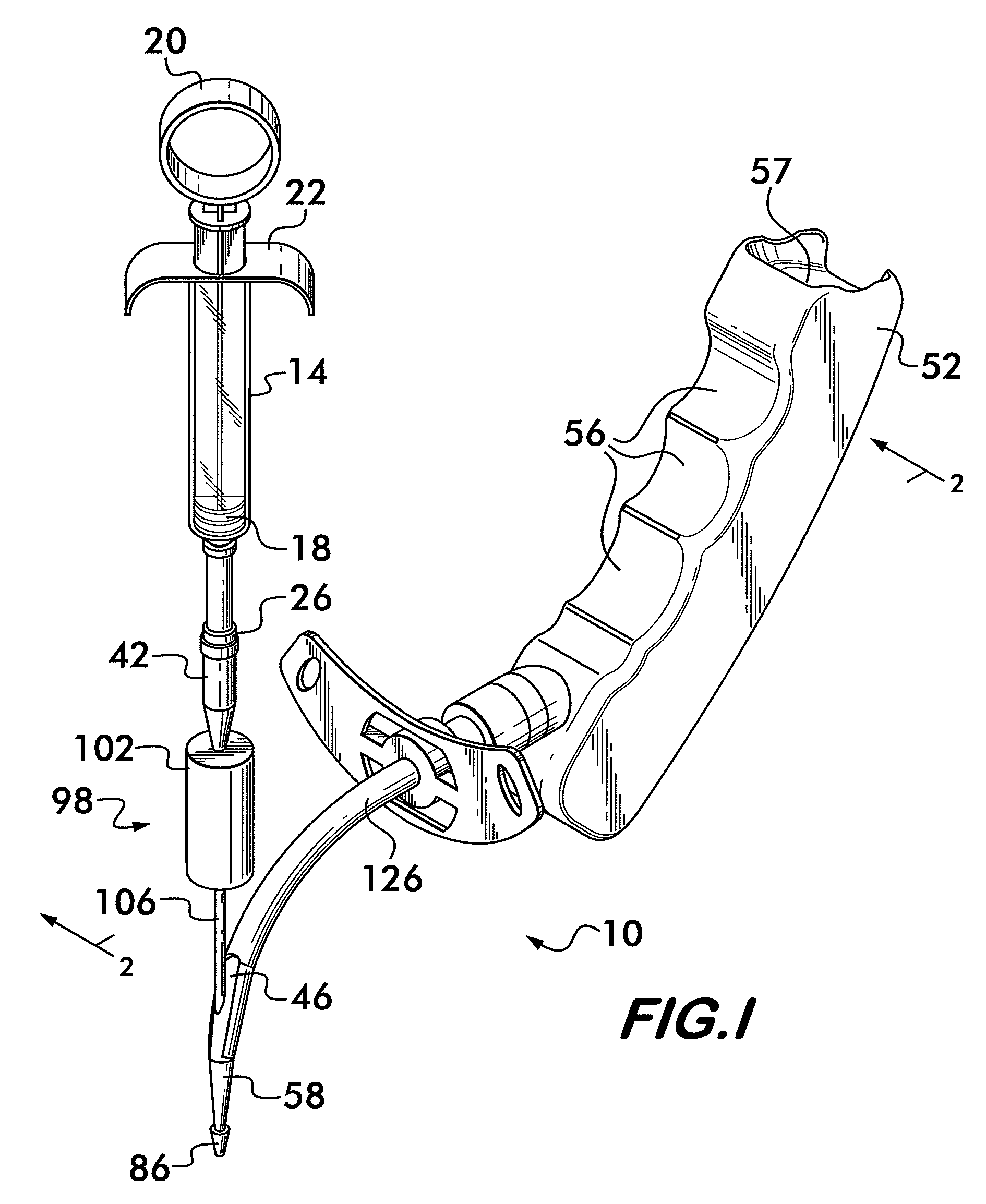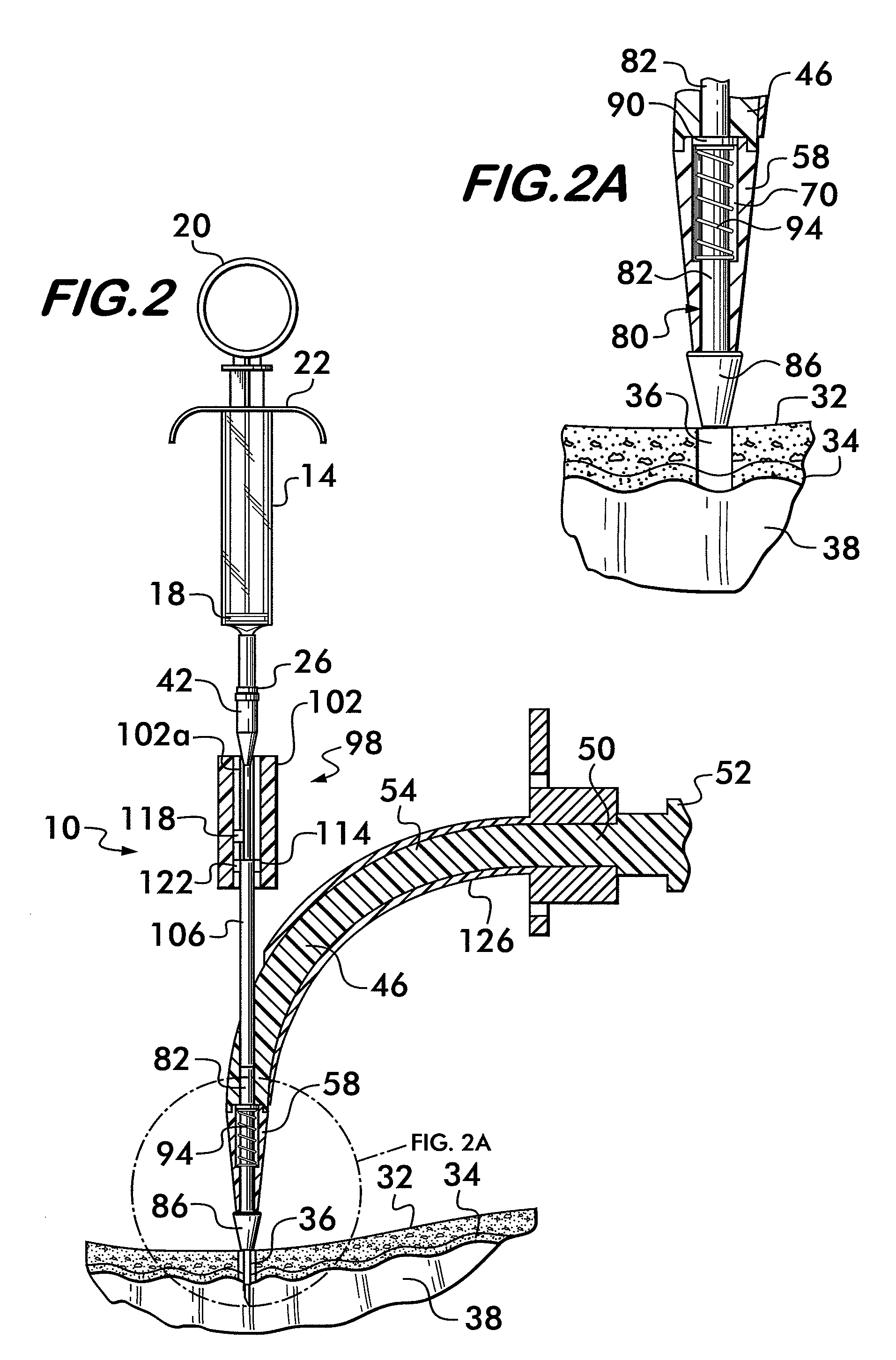Methods and devices for performing an emergency or non-emergency tracheotomy
a tracheotomy and emergency technology, applied in the field of medical instruments, can solve the problems of incision error, incision error, and excessive time for completing the procedure, and achieve the effect of improving the safety and safety of patients and avoiding complications
- Summary
- Abstract
- Description
- Claims
- Application Information
AI Technical Summary
Benefits of technology
Problems solved by technology
Method used
Image
Examples
embodiment 10
[0041]The embodiment 10 also includes a tracheostomy dilator 46, which is shown in FIGS. 1-7. Referring now to FIGS. 2 and 2A, the tracheostomy dilator 46 includes a proximal end 50 which is arranged for attachment to a handle 52, such as when parts of the device 10 are being provided in kit form. Alternatively, the tracheostomy dilator 46 and handle 52 may be of integral construction. As shown in FIG. 2, the tracheostomy dilator 46 includes a curved body portion 54 that extends from the proximal end 50 to a tapered piece 58. The curved body portion 54 is shown as being of uniform cross-section, but may be constructed of other geometries, e.g., tapered, without departing from the scope of this invention.
[0042]As best shown in FIG. 6, the curved shaft 54 includes an internal passageway 62 which extends from the tapered piece 58 linearly upwardly to an opening or port 66 located on the outer surface of the curved body portion 54. The tapered piece 58 is shown as a separate component a...
embodiment 200
[0061]For example, with the safety limiter 239 in place, the needle 230 may be inserted through the neck to a safe and proper position within the trachea 238 without causing injury in approximately 80%-90% of the population. For the remaining 10%-20% of patients, where the location of the trachea falls outside this range, the safety limiter 239 may be removed prior to insertion of the needle within the trachea 238. Although use of this embodiment 200 without the safety limiter 239 may compromise safety and possibly increase the risk of injury, such an approach may be necessary where emergency circumstances require it.
[0062]Referring again to FIG. 11, to affirm that the needle 230 is within the trachea 238, the plunger 218 may be withdrawn utilizing the thumbhold 220 in the direction of arrow 221 to determine the nature of the material at the needle tip 230a. If little or no blood is drawn into the chamber of the syringe 214 and there is aspiration of air, it can be assumed that the ...
third embodiment
[0069]Referring now to FIGS. 16 through 25, there is shown at 400 the present invention which is arranged for performing an emergency tracheostomy. As shown in FIGS. 16, 17, and 20, the device 400 comprises a syringe 414 which includes a movable plunger 418 which is capable of movement along the cylindrical length of the syringe 414. The plunger 418 is also removable from the syringe 414 at end 422 and includes a thumbhold 420 to enable withdrawal of the plunger 418 using the thumb of the same hand that is manipulating the syringe 414. Referring now to FIG. 20, at the other end of the syringe 414, a needle 430 is attached thereto. The needle 430 includes a sharpened distal end 430a to penetrate the skin 432 and cartilage 434 forming the wall of the trachea 438 just above the sternal notch (not shown) at the site of entry where the tracheostomy is performed. Positioned over the needle 430 is a flexible catheter 442, preferably made from teflon or another suitable resilient material.
PUM
 Login to View More
Login to View More Abstract
Description
Claims
Application Information
 Login to View More
Login to View More - R&D
- Intellectual Property
- Life Sciences
- Materials
- Tech Scout
- Unparalleled Data Quality
- Higher Quality Content
- 60% Fewer Hallucinations
Browse by: Latest US Patents, China's latest patents, Technical Efficacy Thesaurus, Application Domain, Technology Topic, Popular Technical Reports.
© 2025 PatSnap. All rights reserved.Legal|Privacy policy|Modern Slavery Act Transparency Statement|Sitemap|About US| Contact US: help@patsnap.com



